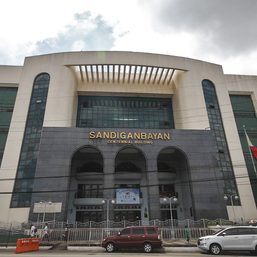SUMMARY
This is AI generated summarization, which may have errors. For context, always refer to the full article.
![[OPINION] Suffering an avoidable bloating of power prices](https://www.rappler.com/tachyon/2023/05/tl-power-bloating.jpg)
Before you read any further, check your light bill for the first quarter of 2023. Make sure you are seated. And if there are children in the room, try not to curse. While the Manila Electric Company (Meralco) had recently and quite heroically tried to mitigate the full impact of the bloating, there are cost inefficiencies that will prevail throughout the rest of 2023. Albeit these are avoidable.
After a series of demolition jobs leveled against an energy producer that had been providing the country’s largest electricity franchise’s lowest cost power, and a campaign to permanently disqualify it from ever supplying power, a bilateral agreement with Meralco was signed to alleviate inordinately high power rates caused by regulatory conflicts.
Since December 2022, and perhaps extending way into the coming months as an El Niño takes effect with rainfall rare and seasonally sparse, electricity rates are expected to rise further.
Blame the weather. It is partly a cyclical phenomenon. But also blame energy authorities. They continuously fail to provide adequate supply, whether baseload or as reserves enough to temper prices both in the open market and at the special Wholesale Electricity Spot Market (WESM). The problem is that there remain vast differences between plate, rated, and actual dependable capacities because power plants remain inefficiently decrepit and many still burn dollar-depleting imported dirty fuels.
Cyclical weather is deus ex machina. It is not avoidable. Government incompetence is. We are continually cursed by political appointees coupled with unproductive factotum. However, there is a third reason to which the recent spike in electricity prices is directly attributable. Its roots are in a phenomenon called regulatory capture.
Regulatory capture is defined as a “form of corruption of authority” where those accountable serve the interests of a minority. Where cronyism is making a resurgent resurrection, it is apparent where this discourse is headed.
It is an aberration whose toxicity we have not seen since over half a century from when our economy was systematically plundered. Unfortunately, the historic highs in our consumer price index in food and power inflation bear witness. We are experiencing in our agricultural sector where only a handful benefit. To our misfortune, the same is inflicted in the energy arena.
A brief skinny explains why.
The electricity value chain starts upstream where independent power producers (IPP) convert fuel into electrons and generate the electricity they pass to the National Grid Corporation of the Philippines. The NGCP then relays these to the distribution utilities (DU) like Meralco where the heaviest burden is borne.
There are three reasons for this.
One, a DU must source from the “least cost” generator. Unfortunately, because officials have failed to attract substantial investments on the supply side, the field for least cost energy is severely limited. When supply cannot be directly contracted from an IPP, the DU is compelled to source from the WESM where its marginal pricing arithmetic, given prevalent undersupply constraints, bloat higher than those from low-cost IPPs.
Two, IPPs are deregulated. They can pass on all costs, including debt, foreign exchange (FOREX) losses, and negative economies of scale. DUs on the other hand are strictly regulated. DU performance-based rates (PBR) are periodically recalibrated following weighted average costs of capital ceilings. When regulators fail to periodically recalibrate, or worse, fail to understand PBR, afflicted with unusually high inflationary environments such as ours, DUs face critical cost squeezes. That compels temporary rate adjustments.
In a span of ten years, recalibration only occurs twice. In retrospect, aggravated by official dereliction, rates negotiated prior to the pandemic are now outdated.
Finally, DUs serve the “last mile” and collect the total billings for all players in the value chain. As such they are at the receiving end of consumer complaints.
In analyzing the recent bloating of power rates we will avoid focusing on specific corporations. The relationships set against the larger canvass among the players suffice to reveal weaknesses that lead to high electricity rates.
In 2019, faithful to its mandate to source from the least cost provider, the country’s largest DU contracted from an IPP whose fuel was Indigenous, less toxic than those from imported coal fired IPPs, and far cheaper. Its FOREX risk was minimal. Its operating expenses (OPEX), competitive. Their bilateral power supply agreement (PSA) provided lower power rates even averaging down prices at the WESM where settlement rates allowed for tariffs much higher than those of bilateral contracts. This is because all generating output was offered at the WESM where the mix includes both high and low cost sources.
The bilateral contract price with Meralco was set at P4.25 per kilowatt hour (kwH). A major source was the Malampaya deepwater gas field, then operated by technically qualified and experienced service contractors. Unfortunately, the pandemic, divestments, and unexpected economic aberrations changed the equation. Critical equity within the gas supplier changed hands, its production was de-rated and eventually shut down.
To prevent a critical supply shortfall, the IPP and Meralco sought a temporary six-month increase equivalent to a monthly adjustment of P0.26/kWh. Regulators denied the request.
That aggravated the undersupply. As a stopgap, a 64% higher-cost coal-fired power plant was dispatched. Never mind its 42% dependable capacity issue. Consequently, more was sourced from WESM. As much as 22%, up from 16%.
What should have been a mere P0.26/kWh increase for six months, resulted in a total bloating of rates to as much as P11.43/kWh for March from a previous high of P10.89/kWh in February.
To cushion the aggravated inflationary impact, Meralco deferred collections, applied payables to consumer’s bills and negotiated a one-year temporary supply contract from the least-cost IPP. These and other factors slightly alleviated prices to P11.31/kWh for April.
But do the math. Power rates last November were P9.94/kWh. They started bloating last December when as much as 670 MW was bought from WESM. Prices are projected to increase even further. We pray its causes will not be regulatory capture, incompetence, or dereliction. – Rappler.com
Dean de la Paz is a former investment banker and managing director of a New Jersey-based power company operating in the Philippines. He is the chairman of the board of a renewable energy company and is a retired Business Policy, Finance, and Mathematics professor. He collects Godzilla figures and antique tin robots.
Add a comment
How does this make you feel?






![[Newsstand] The Marcoses’ three-body problem](https://www.rappler.com/tachyon/2024/04/tl-marcoses-3-body-problem.jpg?resize=257%2C257&crop=451px%2C0px%2C1080px%2C1080px)
![[Edgewise] Preface to ‘A Fortunate Country,’ a social idealist novel](https://www.rappler.com/tachyon/2024/02/a-fortunate-country-february-8-2024.jpg?resize=257%2C257&crop_strategy=attention)
![[New School] When barangays lose their purpose](https://www.rappler.com/tachyon/2024/02/new-school-barangay.jpg?resize=257%2C257&crop=414px%2C0px%2C1080px%2C1080px)
There are no comments yet. Add your comment to start the conversation.